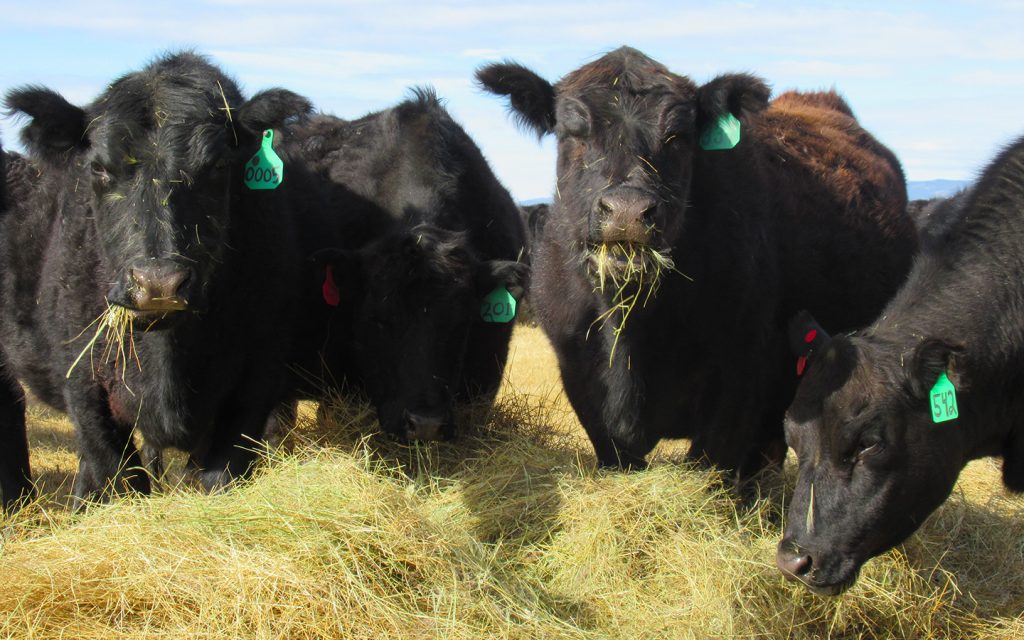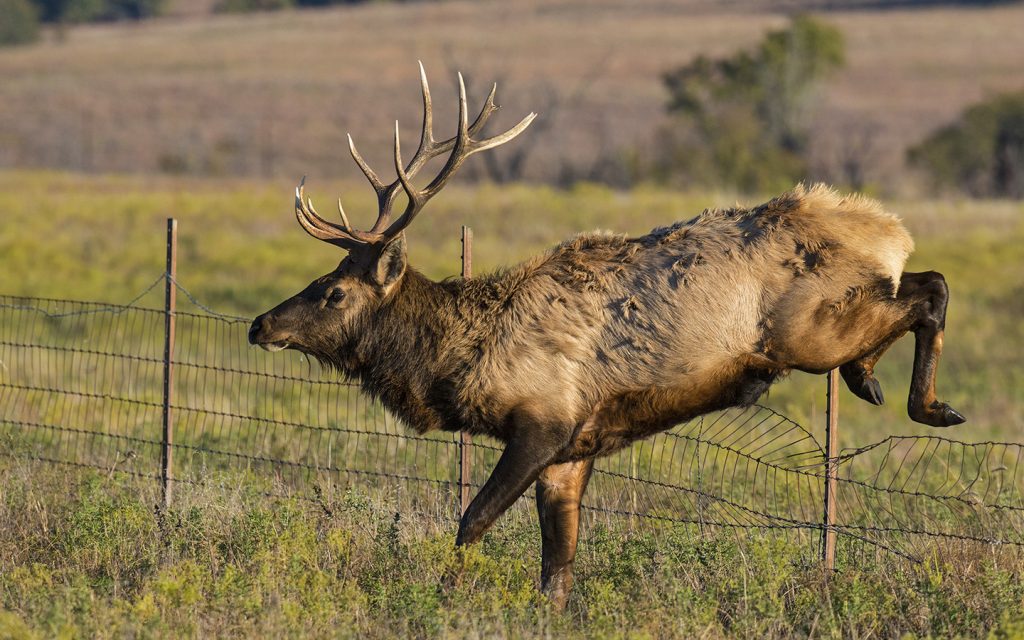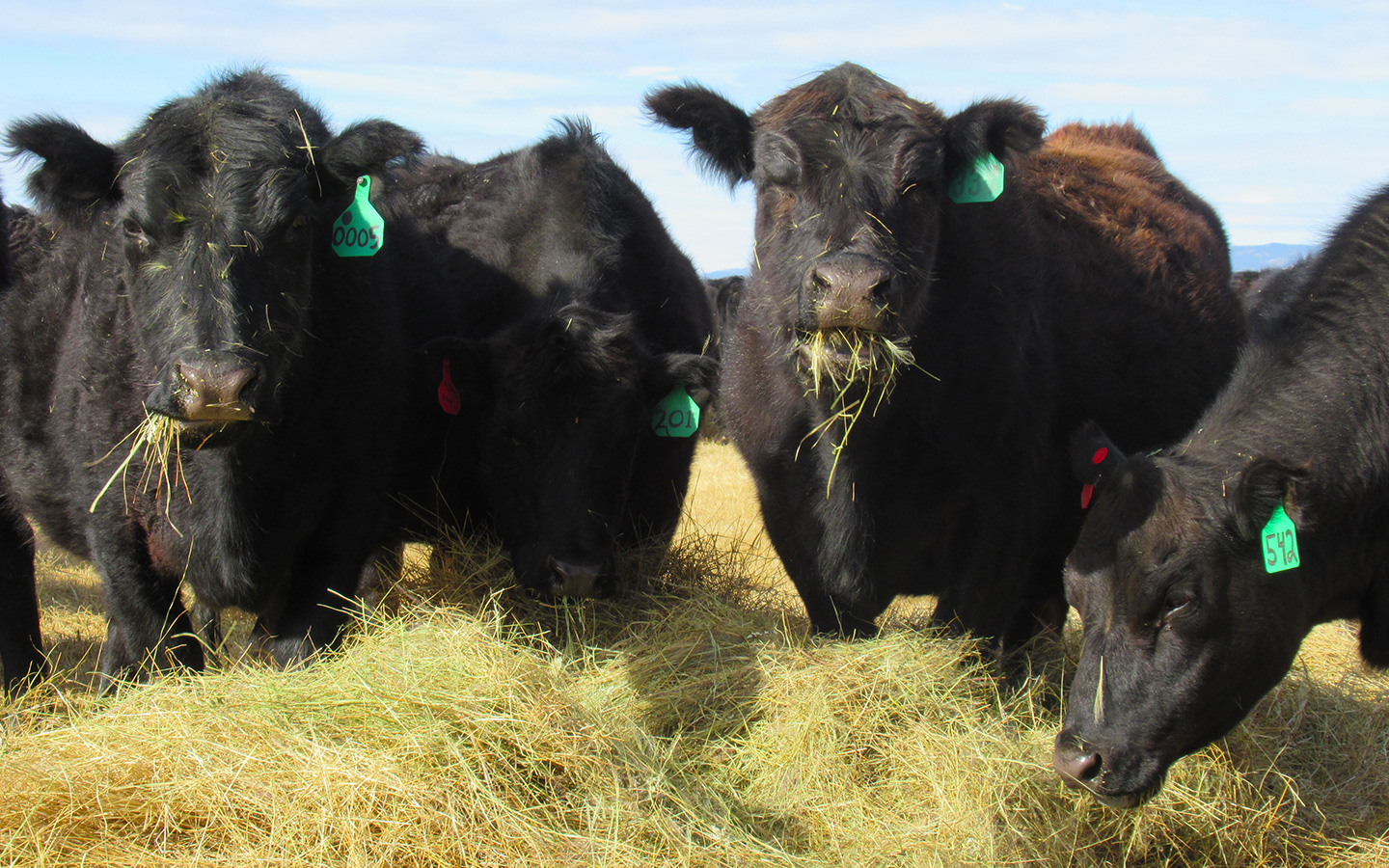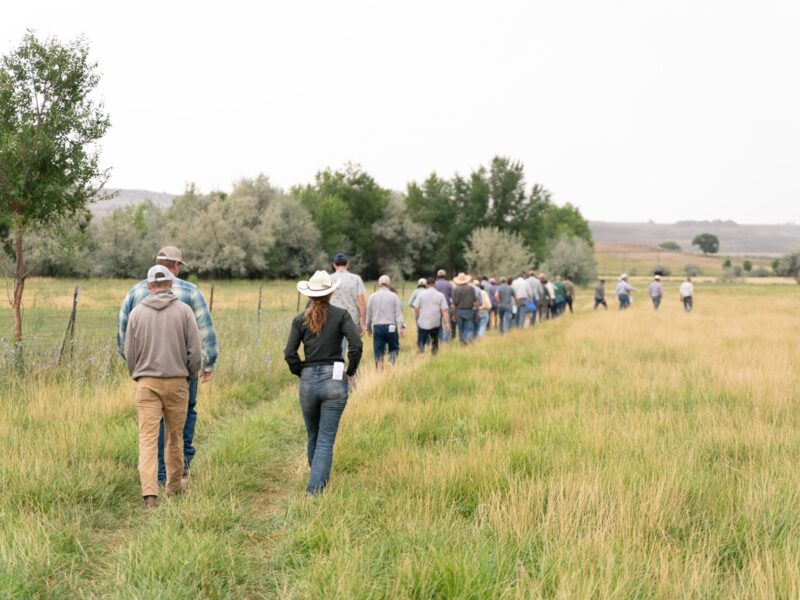Unless you are actually standing there, boots on the ground, in the dust of a vast, arid landscape, it is impossible to imagine the scale of the challenge. How do you get grass to grow when there is no rain? How do you begin to restore the water-holding capacity of land if you don’t have grass? What do you do when the streams and wells dry up?
On Land turned to renowned grazing expert Allen Williams for some advice in addressing this all-to-common challenge in the West.
Despite popular ideas about regenerative grazing, there are no easy or quick solutions. Grazing in New Mexico, where average annual precipitation is 13”, is entirely different than grazing in places like Missouri with an average annual rainfall of 41”. West of the 100th meridian, the carrying capacity of the land drops dramatically, which means one acre of land in the West will support fewer animals than one acre of land in the East. This has practical implications for the way in which livestock can be managed. But there are other factors as well.
Water is scarce in the West and agriculture is heavily dependent on irrigation and ground water. Pastures and grazing rotations must be planned around available water sources, which means water is the limiting factor in most livestock management systems.
The West’s public lands pose another set of constraints. Because there is so much federal land in the West, it is an integral part of the western ranching economy. However, agency rules limit what a producer can do on a federal grazing allotment. Even where water is available, installation of water infrastructure needed to support rotational grazing, for example, can entail a complex and time-consuming environmental review process. The threat of litigation from anti-ranching organizations is always present in these analyses, limiting the potential for both public agencies and producers to experiment with innovative grazing management strategies.
In addition, because federal lands also serve other purposes, from sustaining wildlife populations to recreation to energy development, grazing management must be considered alongside these other land uses. For example, while fencing is an important tool for rotational grazing, it can also create challenges for wildlife and recreationalists.
Finally, the West is home to many different types of wildlife which adds yet another layer of complexity to grazing management. Elk, for example, routinely destroy fences, compete with livestock for forage, in some areas transmit the deadly disease brucellosis and are often accompanied by predators that also threaten livestock. Importantly, they make it very difficult for producers in areas with heavy elk populations to manage grazing impacts. A rancher may rotate livestock out of a pasture in order to provide adequate rest and recovery only to find a large herd of elk grazing in their wake. When grass is re-grazed before it has a chance to grow to maturity, it can weaken and eventually kill the plant. This is overgrazing. In a number of places in the West, even where livestock are not present, burgeoning elk herds are taking a toll on grasslands, forests and riparian systems.
So what can producers do?
Allen Williams, a sixth generation family farmer and founding partner of Understanding Ag and the Soil Health Academy, says there are no simple solutions and that successful producers are keen observers who embrace adaptive management. Williams has a Ph.D. in Livestock Genetics from LSU and has consulted with more than 4000 farmers and ranchers in the U.S., Canada, Mexico, South America, and other countries, on operations ranging from a few acres to over 1 million acres. “Prescriptive approaches don’t work,” he says, “because nature doesn’t work that way.”
There are, however, some basic ingredients for success and the first of these is knowledge. “When it comes to regenerative practices, you can’t implement what you really don’t know,” Williams tells On Land. “It takes more than attending a lecture or reading an article.” Practitioners need to understand soil and rangeland ecology and to become close observers in order to implement adaptive management.
The second key ingredient is planning. “Always plan and anticipate a drought,” he says. “Never work off of a prior moist year. That means stocking your ranch for a drought year or making sure you are in a position to put and take so that during drought conditions you can reduce or restock with cows and yearlings. You also want to leave plenty of residual behind in your pastures to protect soil moisture and temperature.”
“Always plan and anticipate a drought. Never work off of a prior moist year. That means stocking your ranch for a drought year or making sure you are in a position to put and take so that during drought conditions you can reduce or restock with cows and yearlings.”
Allen Williams
“To grow grass, you have to have water, sunshine and biology,” he says. “If you have a lack of any one or more of those you are going to have a hard time.” Many rangelands in the West are dry to begin with, but their soil’s water-holding capacity, which is a factor of soil biology, may also have been damaged by previous use.
In that situation, he said, the act of putting cattle out there and moving them around isn’t going to help. “The first thing we tell people to do is identify areas that already have some biology. On most ranches, you can find those areas. You don’t start with the worst areas first. Instead, find the best areas and pockets of biology and focus your grazing efforts there. Then grow that biology out like ripples from a pebble in a pond. The ripples are small at first but they grow. We use the ripple effect in the desert. Then we find the next spot and repeat that until we eventually grow those hotspots of biology together.”
One way to jumpstart that process on private lands (federal grazing regulations constrain the use of supplemental feed) is through bale grazing. Williams recommends placing bales 30 feet apart in a checkered fashion so the cattle can get all around each bale. “You want them eating no more than 50 % of the bale and you want them spreading out the rest. They are putting carbon and protective mulch on the soil, stimulating biology with hoof action and adding manure and urine in a concentrated fashion. The animals themselves are applying biology which stimulates microbial growth in the soil and that latent seed bank. Bale graze at high densities and then get off of it and give it a long rest so the latent seed bank can respond.”

The mulch layer is critical, Williams emphasizes, because it protects the soil from the sun. “Microbes function optimally in soil temperatures between 50-80 degrees Fahrenheit, but when exposed to the sun, the soil can heat to 140 degrees or higher,” he notes. “You have to cover the soil.”
The same idea is also important for winter conditions. Grazing pastures to the ground in fall or winter leaves soil microbes vulnerable to freezing temperatures, which in turn impairs nutrient cycling. “This can set the system back severely,” Williams says. “Is important for winter to leave plenty of residual for insulation and plenty of root mass to feed soil microbes.”
Grazing management that maintains vegetative cover and healthy soils also helps to improve water infiltration and water holding capacity of the soil. This is key when it comes to productivity and resilience. “Many of our ranches get at best six to eight inches of rain per year and that comes in a two to three-month period,” Williams says. “Ranch A is getting six inches because they are retaining it, but Ranch B is effectively getting only one inch because it is running off. That is a big issue. The water retaining infiltration capacity of these soils is poor, but it wasn’t always that way.”
While soil moisture is important for growing grass, water for livestock is often the primary limiting factor for many livestock management operations in the West. “It is number one,” Williams says. “It doesn’t matter how much grass you are growing, without water you won’t be able to utilize that grass.”
One of the ways to address the challenge of getting water to the right places is the development of small reservoirs and gravity fed distribution systems. As Pat O’Toole of the Ladder Ranch notes, wells supported by permanent or portable solar pumps are another option. These water systems are also beneficial to wildlife. In many places, particularly in times of prolonged drought, stock tanks and small reservoirs provide the only water available to wildlife in an area. Adding escape ramps to tanks and ponds can help ensure wildlife do not get trapped in them and drown.
While the development of water infrastructure is critical to livestock operations, it can also be expensive. However, Williams says that producers need to think about this as an investment rather than an expense. “Water always pays for itself if you run the livestock appropriately afterward. “If you run the livestock conventionally, you really haven’t done anything, and then it is a cost.”
When it comes to managing livestock in the context of heavy wildlife populations, ranchers have relatively little control. Wildlife are managed by state wildlife agencies that are often under pressure by sportsmen to maximize the populations of game species such as elk. This can create direct conflicts with livestock operations and make the successful implementation of regenerative grazing practices difficult. In certain confined pasture situations, producers may have the opportunity to fence elk out. Williams offers a low-cost technique that seems to be effective.
“You have to create optical illusions for elk and deer,” he says. “Fences that are straight up and down, except high fences, provide zero deterrent for elk and deer. But you can pretty cheaply create an optical illusion. At intervals along the regular fence, you put in a post at an angle and string those with some high tensile or poly wire. This creates an illusion to them that (the fence) is three dimensional. It works well even with domesticated livestock like sheep and goats. You are creating a psychological barrier that they believe they cannot go around, over or through.”

However, when it comes to larger grazing operations, particularly on federal allotments, excluding elk and other migrating wildlife is not an option. In fact, many producers are installing wildlife-friendly fencing that allows migratory animals to move more freely across the landscape. This is where adaptive management and collaboration with agencies and stakeholders becomes essential. In addition, policies are needed that better support landowners in balancing multiple demands on the rangeland while remaining economically viable.
One solution currently in discussion is the use of carbon markets to compensate producers for practices that improve rangeland health and sequester carbon. Theoretically, this could enable producers to adjust management and stocking levels to account for drought, wildlife and other resource needs. However, Williams encourages landowners to take a wait-and-see approach. “I get asked every single week about the carbon programs and we have deeply evaluated pretty much every program out there and our advice to people is don’t sign a contract with anybody right now,” Williams says. “The science, technology, money and policies are not there yet and I would advise ranchers to hold off and wait until those are far better developed.”





